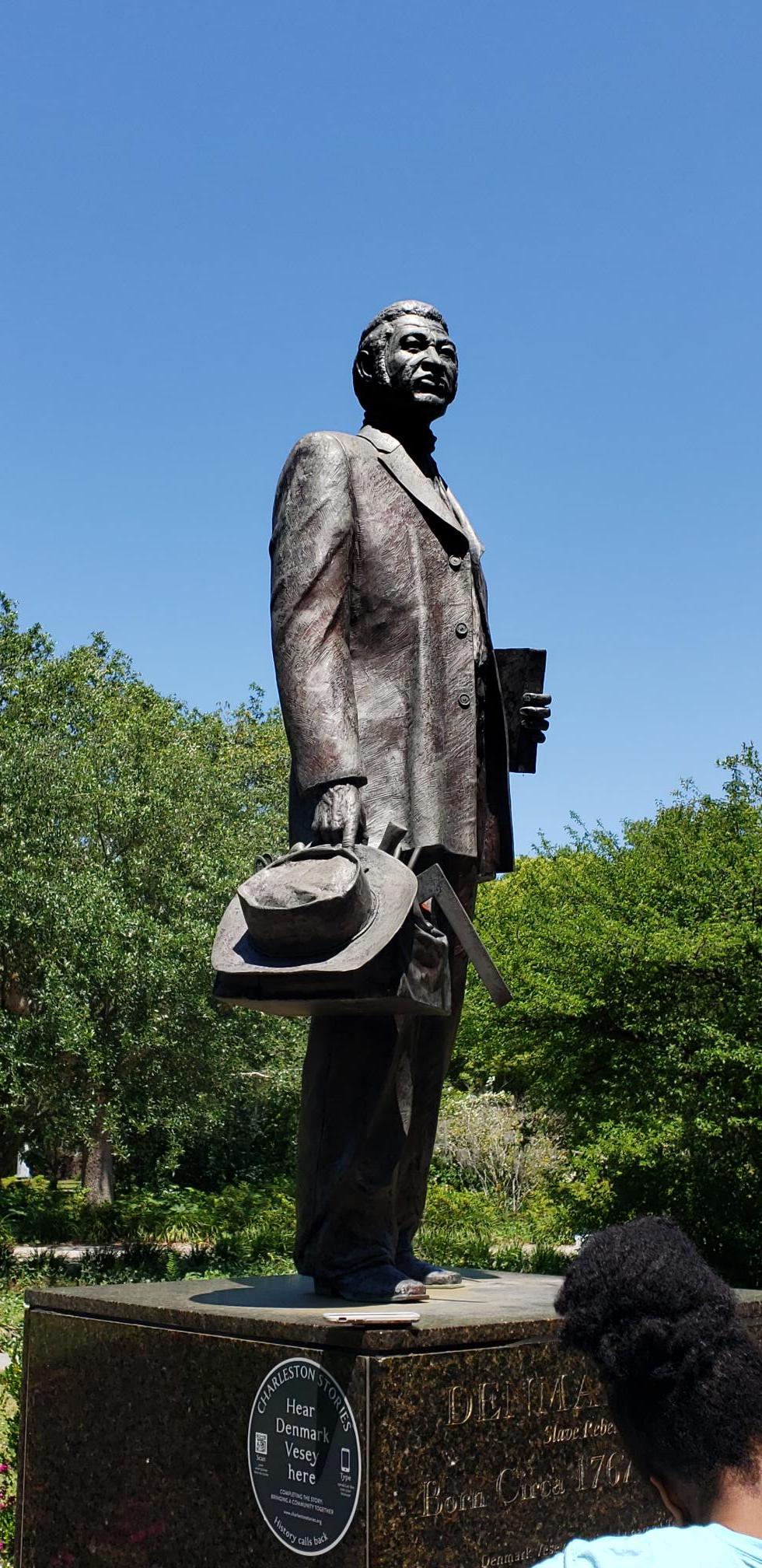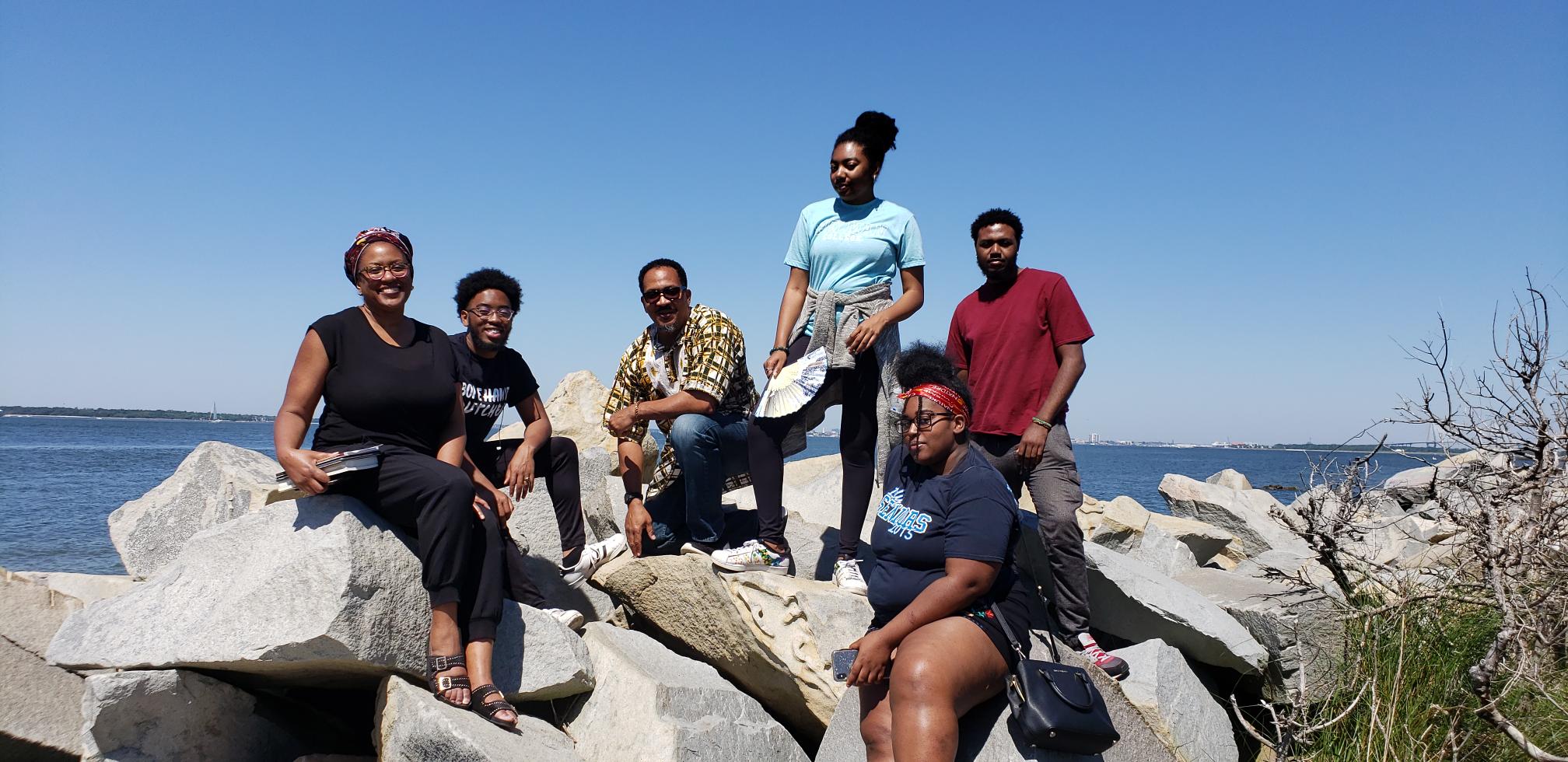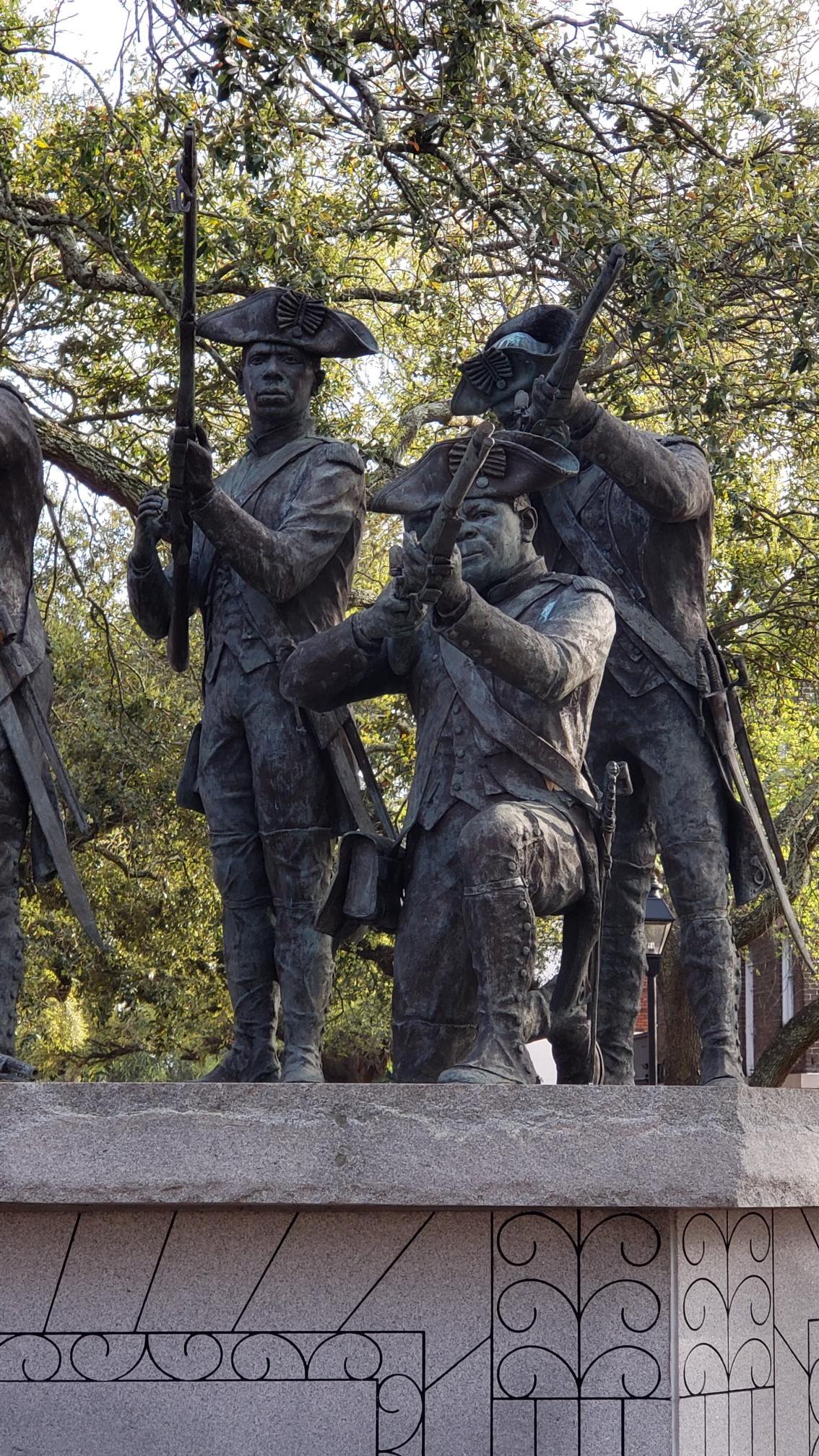Back To Blog
The Site of Memory: The 1526 Project and Why it Matters
November 22, 2021Written by: Morehouse College
The war against Black Memory, marked by a concerted effort to crush the 1619 Project and what some are calling Critical Race Theory took a strange turn in a familiar theatre of battle, Virginia. The state and its gubernatorial race, where candidate and now governor-elect, Glenn Youngkin took political advantage of Nobel laureate, Toni Morrison and her magnum opus, Beloved, as a book supporting CRT. The novel channels the spirit of the real enslaved rebel Margaret Garner and centers on the life of Sethe, her family, and the two year-old infant who Sethe kills rather than she her return to slavery. In the epigraph of the book, which is dedicated to the 60 million and more who died in the Maafaor African enslavement, it becomes clear that this two year-old infant, who will be called Beloved, is a symbol of the 60 million and more who have been lost as a part of this African Holocaust. Morrison gave us an African-centered understanding of past trauma and our collective memory of it as a force that refuses to be ignored. Beloved offers a “Site of Memory” positioning all who care to read an enslaved African’s vantage point from which to think though the past. As a class of institutions, Historically Black colleges and Universities are charged with the mission of arraying sites of memory and thinking through the Black past, while preparing students with disciplined minds sharpened on the dual whetstones of Black history and culture. The political maneuvers of conservatives deploying racist dog-whistles, anti-Black Voter restrictions, patriarchal policies, and other negative social forces make aggressive truth-telling more relevant now than ever. The war on CRT is a proxy war against truth, memory, and the collective Black freedom struggle.
Consistent with the HBCU mission of Black truth-telling, several faculty members at our HBCU in Georgia have come together to advance a book, “The 1526 Project: Gullah Geechee Origins of African American History and Cultures of Resistance,” which raises the questions: When does African American history begin? And how does the 1526-framing of Black history affect the development of a culture of resistance? The writers of the 1526 Project examine the reciprocal relationship between African resistance against slavery and the efflorescence of Gullah Geechee society and cultural production as the framing generative context for African American society. This book explores the founding and cultural development not of America, but of African America.
The 1526 Project begins with the story of the San Miguel 100—a group of African slave rebels—and examines the rise of Gullah Geechee cultures of resistance against the backdrop of New World political economies, but also framed by African sociopolitical priorities on the continent and against Spanish, Portuguese, and English colonial ideologies in the Caribbean. Organized in three parts, the book surveys Gullah Geechee histories of resistance, creative cultures, and sociopolitical patterns that facilitated processes of resistance and the healing of transgenerational trauma. We posit that Black American history should be reckoned from the moment in the Summer of 1526 when 100 enslaved Africans were first brought to the shores of the North American Lowcountry by the Spanish. Nearly a century before 1619, enslaved Africans were in Winyah Bay (SC) and Sapelo Sound (GA), then in St. Augustine in 1565, and briefly the following year in St. Helena colony near Beaufort, SC. Just as important, viewing the 16th century as a historic and historiographic pivot point may assist our students understand more profoundly present-day international struggles over race, gender, culture, and class.

The editor and writers of our coming book drew inspiration from Nikole Hannah Jones and the New York Times’ 1619 Project, which has been praised and criticized for exposing racist omissions to American history and for opening a space for a greater variety of voices in the discourse about how America emerged as a nation-state and slavery-based settler colony. What are the implications of beginning with one year or another? Project Director Jones positions the year 1619 as a counterpoint to mythologies of color-blind meritocracy supposedly signified by other foundational dates like 1620 and the Mayflower Compact, 1776 and the Declaration of Independence, and 1787 and the United States Constitution as the nation’s foundational moments. Correcting for rampant American racial blind-spotting, Jones views 1619 as the moment when the enslavement of African people began shaping American institutions. This edited magazine admirably highlights the need to further explore the complexities of America’s historical origins. The 1526 writers position our book project as an allied effort, but more directly concerned with the full history of how African America came into being including its connections to Africa, the Caribbean and Native American nations.
The 1526 Project marshals a great array of scholarship on Gullah-Geechee cultural history, since Lorenzo Dow Turner’s Africanisms in the Gullah Dialect and Sterling Stuckey’s Slave Culture: Nationalist Theory and the Foundations of Black America. As an undergraduate student at the University of South Carolina, reading anticolonial literature on the consolidation of African American identity and history was a central part of my extra-curricular studies: Malcolm X, John W. Blassingame, Myrlie Evers, Angela Davis, Sterling Stuckey, Shawna Maglangbayan, Tony Martin, Cheikh Anta Diop, and Peter H. Wood, (not to be confused with Peter W. Wood, discussed below), among others all provided a foundation for the present work. For example, Peter H. Wood’s Black Majority: Negroes in Colonial South Carolina from 1670 through the Stono Rebellion played an important role in my undergraduate education as it documented what I had heard my elders in the North Santee community say concerning the Lowcountry’s Black numerical majority. Namely, that Geechee folk were largely responsible for building the Lowcountry’s culture, society and wealth and in founding African American history and society.[1]
Most prominent among texts upbraiding the 1619 Project is the conservative National Association of Scholars’Peter W. Wood’s 1620: A Critical Response to the 1619 Project, emphasis on the foundational role of the enslavement of Africans in directing the course of American history. Is this debate a healthy contestation over ideas or an ideological exercise in social control through censorship? The full-throated condemnation of Critical Race Theory and The 1619 Project and its claims suggests the latter. Take for example, Wood’s timely if not opportunistic, 1620: A Critical Response to the 1619 Project, which relies on a questionable premise for its heuristic framing. He charges Jones and the New York Times Magazine with playing “identity politics” and with replacing the “traditional account [of American history] with one that makes the black experience primary – and not for black Americans, but for all Americans.” We may read Wood’s critique as saying, ‘an African-centered perspective is fine for Black people and within Black spaces as long as it remains in its place and does not assume the space reserved for the dominant, ruling (read White) narrative.’ Wood is not alone. Mary Grabar attempts to Debunk the 1619 Project, while Philip Magness offers a modest critique. As educational psychologist, Dr. Asa G. Hilliard cautioned during the anti-Afrocentric mania of the 1980s and 90s, any Black scholar-activist accurately and forcefully telling African people’s stories will be subject to reprisals including censorship. Given that an array of historians including Alfred and Ruth Blumrosen, John Hope Franklin, Gerald Horne, Jill Lepore, Joe William Trotter, and David Waldsteicher, among others have discussed America’s well-recorded defense of slavery and reactionary response to British flirtations with abolition it is not clear whether the critiques by historians, Sean Wilentz, James McPherson, Victoria Bynum, and Peter W. Wood are motivated by honest scholarly interest or a reaction to seeing a Black woman’s journalistic perspective appear in the New York Times magazine. How much of an instigating factor was the mass distribution of the 1619 Project in public schools and colleges across the nation?
As the struggle for Black Lives in the confederate states persists, the relevance of Gullah-Geechee communities in this founding story is more relevant now than ever. The 1526 Project privileges their narratives that exploring cultural resistance to American nationalism, while examining marginalized intracultural and cross-cultural ties with Native Americans, between the Gullah-Geechee and Caribbean Diasporic nations, and between the Gullah and their African siblings. Picking up the warrant laid down by Nikole Hannah Jones and Toni Morrison, we explore those souls who 1619 Project poet Tyehimba Jess describe as having,
...slipped out deep after sunset,
shadow to shadow, shoulder to shoulder,
stealthing southward, stealing themselves,
steeling their souls to run steel
through any slave catcher who’d dare
try stealing them back north….

Taking up Morrison’s accounting for the “disremembered and unaccounted for,” the writers of the 1526 project are working to include those left out of these founding narratives. Samuel T. Livingston (Africana Studies) edits the text and our writers are Frederick Knight (History), Karcheik Sims-Alvarado (Africana Studies), Consuella Bennett (English), Corrie Claiborne (English), Jason R. Young (History), Natasha Walker (English), Stephane Dunn (English/CTEMS), Carrie Dennison-Elliott (Social Work), Monique Earl-Lewis (Africana Studies and Psychology), Steven Gayle (Political Science), Cynthia Hewitt (Sociology), Ifetayo I. Ojelade (Psychology), Daron Lee Calhoun II (History/Archival Studies), Akinyele Umoja (Africana Studies). Instead of politically motivated polemics like the 1620 or 1776 Project, this book will focus on empowering voices and narratives from the African Diaspora. We look forward to extending our interdisciplinary conversation on these matters in the Morehouse, AUC and broader communities.
[1] In my first draft of this essay, I confused Dr. Peter H. Wood with the reactionary work Peter W. Wood, author of 1620: A Critical Response to the 1619 Project. I sincerely apologize for this confusion. The 1526 Project owes a great deal to Peter H. Wood’s Black Majority and his career of documenting Black life in American history. In his works, including Black Majority (1975) and Strange New Land (2003), the earliest enslaved Africans arrived in the Lowcountry of 1526.
_____
Samuel T. Livingston, Ph.D., is an associate professor of Africana Studies at Morehouse College.
